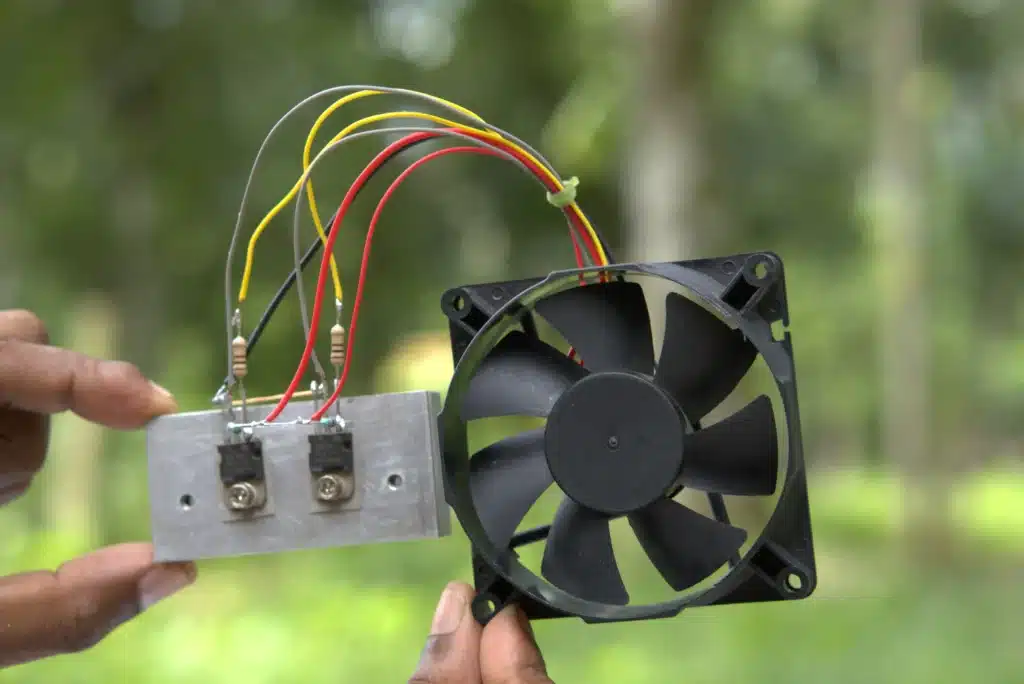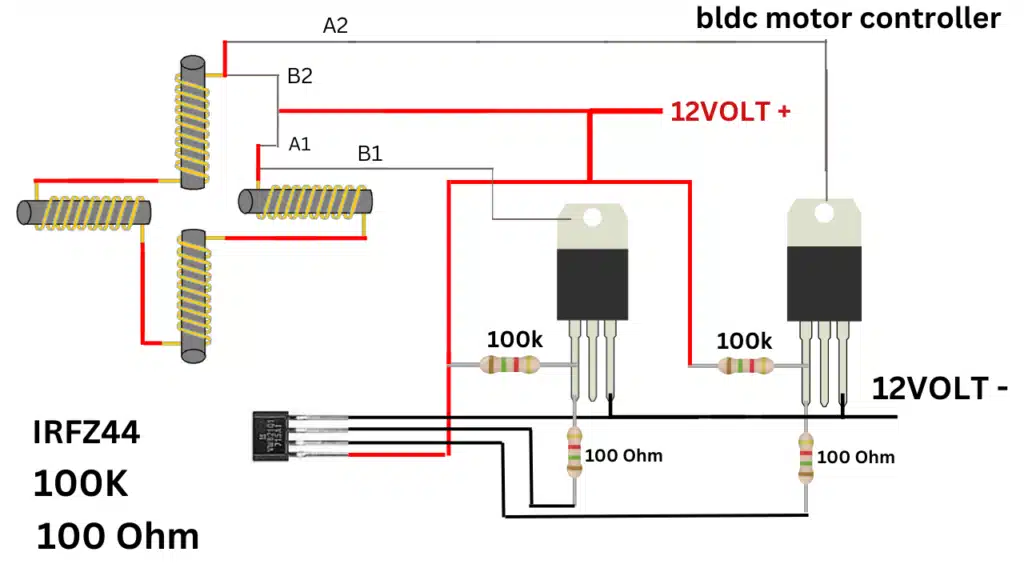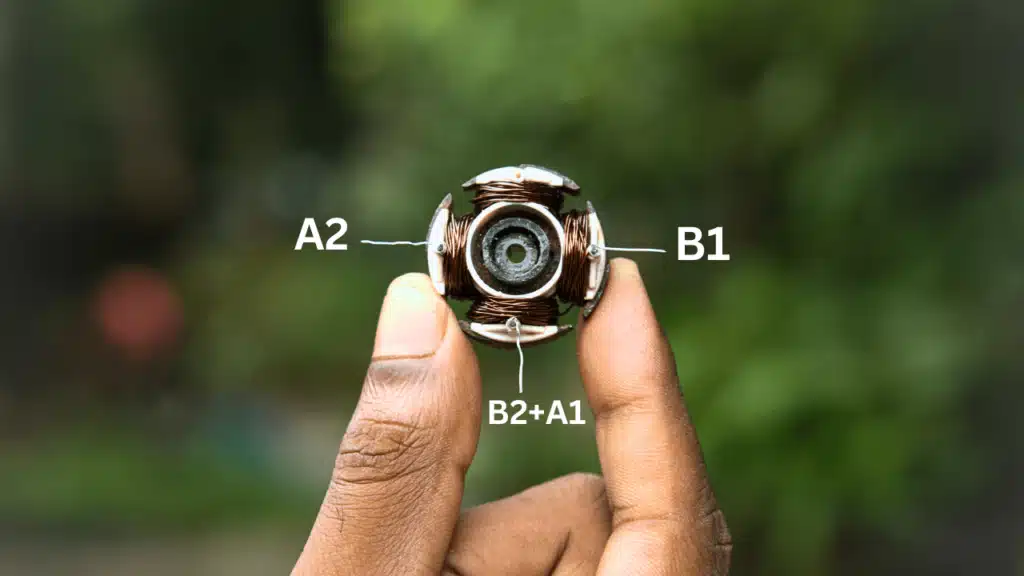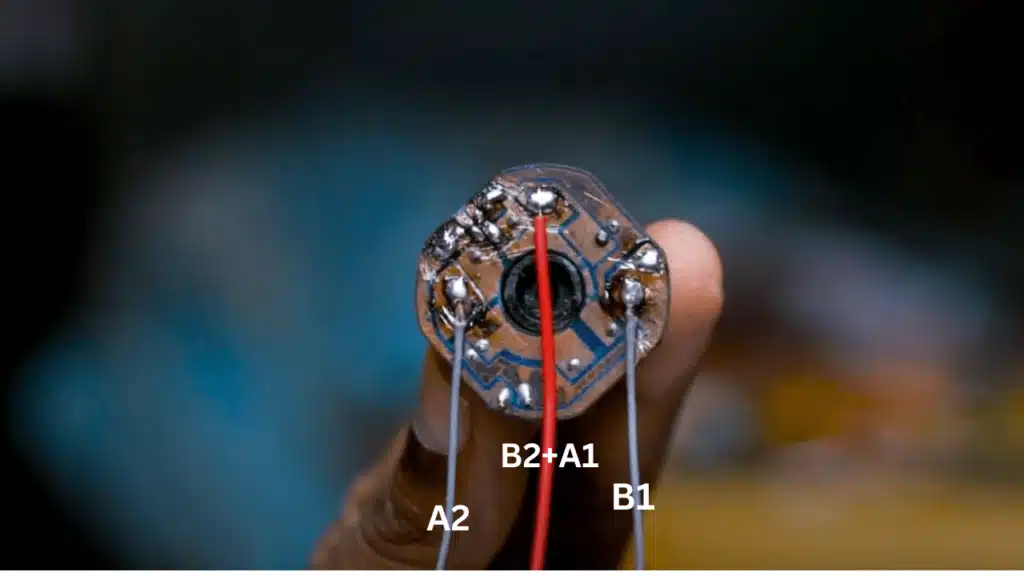Hello friends how are you all. If you want to make a bldc motor controller, then read my entire post.
Today I will show you how to make a BLDC motor controller at home. And if you want you can download the circuit diagram and make it yourself.
I have given the circuit diagram. It shows why one can build a BLDC motor controller. So let’s get started…

How to Make a 3-Phase BLDC Motor Controller at Home
To get started building your own 3-phase BLDC motor controller, follow these simple steps:
Component List:
Before we create the controller, let’s look at the component list.
| Irz44n mosfet | 2 PS |
| 100k resistor | 2 PS |
| 100 Ohm | 2 PS |
| Hall Effect Sensor | 1 PS |
| 12-volt battery | 1 PS |
| BLDC MOTOR | 1 PS |

Very Important Announcement
MOTOR FAST TIME RUN CHECK 5 VOLT INPUT ## MAXIMUM 12 VOLT INPUT
The speed control circuit diagram of both Bldc motors is the same.
BLDC Motor Controller Circuit
Before assembling the components, it’s essential to have a clear understanding of the BLDC motor controller circuit.
The circuit consists of various elements that work together to control the speed and direction of the motor. It typically includes power stages, gate drivers, sensors, and a microcontroller to manage the operation.

Assembly
- Microcontroller Configuration:
Begin by configuring the microcontroller. Write the code to control the motor’s speed and direction. Make sure to include appropriate libraries and functions. - Power Stage Assembly:
Assemble the power transistors, gate driver ICs, and other components on the PCB board. Connect the power supply and motor to the circuit. - Sensor Integration:
Integrate the current and voltage sensors into the circuit. These sensors provide feedback to the microcontroller, allowing it to adjust the motor’s performance based on real-time data. - Testing and calibration:
Upload the code to the microcontroller and power on the circuit. Test the motor controller by varying the speed and direction. Calibrate the sensors if needed. - Fine-Tuning:
Monitor the motor’s behavior and fine-tune the controller’s parameters for optimal performance. This might involve adjusting the PWM frequency, current limits, and sensor calibration.

Free Circuit Diagram PDF Download
For your convenience, we’ve prepared a detailed circuit diagram that you can download and reference throughout the construction process. Download the PDF here.
Bldc Motor Controller at Home
The Conclusion
Creating your own 3-phase BLDC motor controller might sound like a challenging task, but with the right guidance and determination, it’s a rewarding project that offers valuable hands-on experience in electronics and motor control.
By following the steps outlined in this guide and referring to the provided circuit diagram, you’re well on your way to building your very own motor controller from scratch.
Remember, experimentation and learning are key in the world of DIY electronics. Have fun tinkering with different components, codes, and settings to unlock the full potential of your BLDC motor controller project.
- Also, Read This article: How to Make a BLDC Motor ESC Using MOSFET
How to make a 3-phase Bldc motor controller at home very easy
FAQ
How difficult is it to build a 3-phase BLDC motor controller for beginners?
Building a 3-phase BLDC motor controller might seem complex, but with a clear understanding of electronics basics and proper guidance, even beginners can successfully create one.
Can I use any microcontroller for this project?
Yes, you can use various microcontrollers, like the Arduino or Raspberry Pi. Choose one that you’re comfortable with and that suits your project requirements.
Do I need advanced soldering skills?
Basic soldering skills are sufficient for this project. You’ll need to solder components onto the PCB board, so some practice will be beneficial.
What is the advantage of a BLDC motor over a traditional brushed motor?
BLDC motors offer higher efficiency, a longer lifespan, and smoother operation compared to brushed motors. They also require less maintenance due to the absence of brushes.
Is the circuit diagram suitable for different motor sizes?
Yes, the circuit can be adapted for different motor sizes by adjusting the power stages and current/voltage ratings accordingly.
Can I modify the controller for sensorless operation?
Yes, you can modify the controller for sensorless operation by implementing advanced algorithms for commutation based on back EMF detection.
Faltou didática faltou falar do controlador, entretanto, parabéns.
PERGUNTO, tenho um motor trifásico, você tem um esquema com um controlador de ventilador onde haja um controlador trifásico?
Obrigado
hi sir